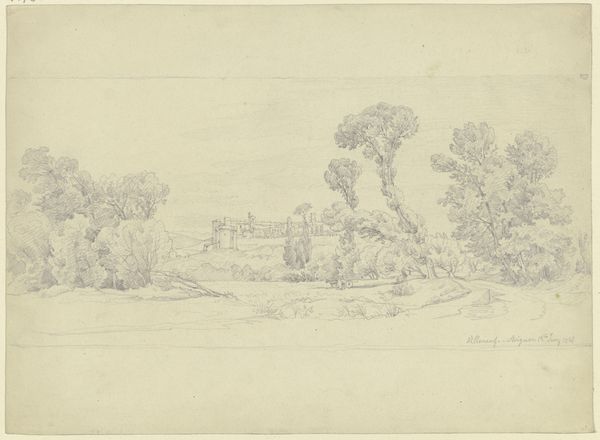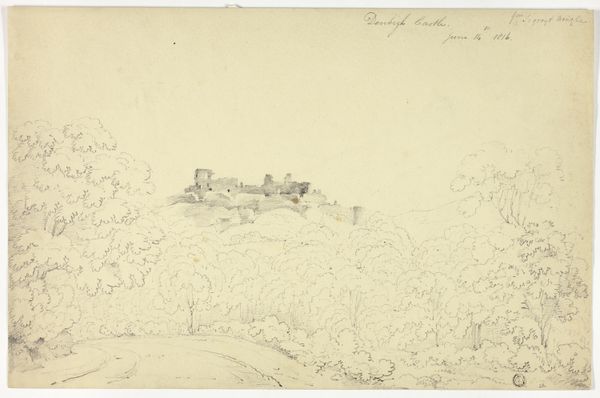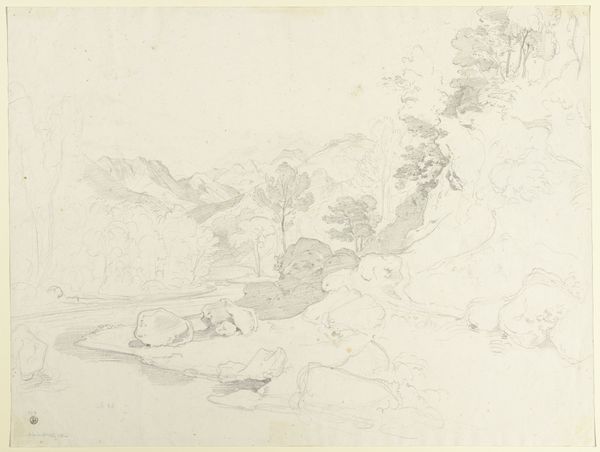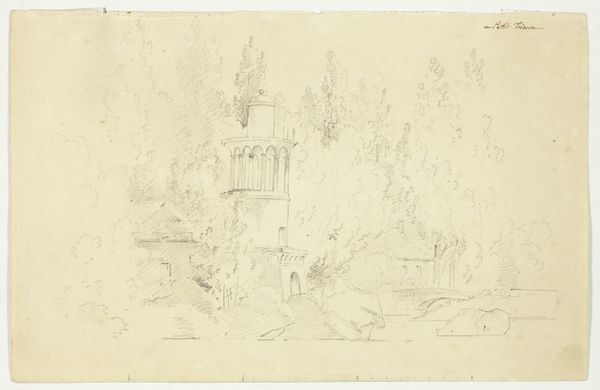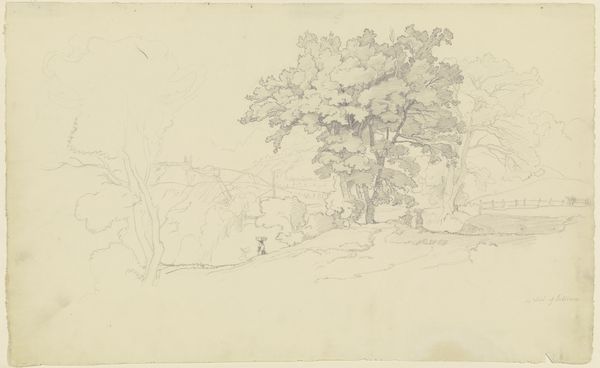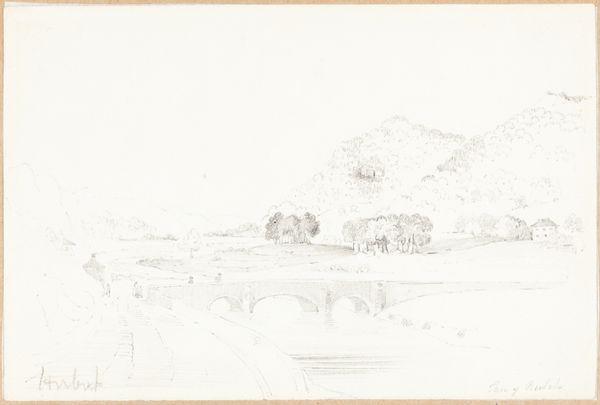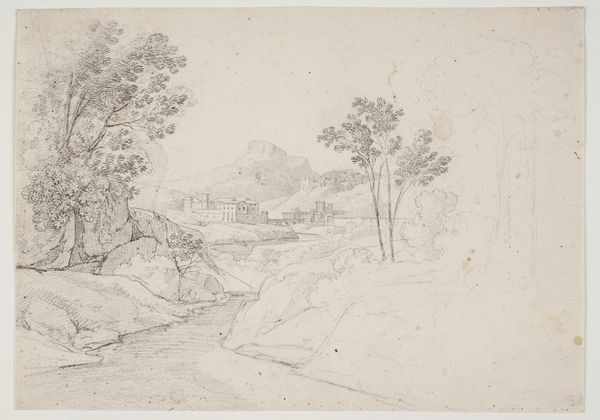
Udsigt over en høj med haver og enkelte bygninger, udført på grundlag af romerske motiver? 1743 - 1809
0:00
0:00
drawing, watercolor, pencil
#
drawing
#
neoclacissism
#
landscape
#
watercolor
#
pencil
Dimensions: 339 mm (height) x 508 mm (width) (bladmaal)
Curator: Here we have a landscape drawing by Nicolai Abildgaard, dating from between 1743 and 1809. Its full title is "View of a Hill with Gardens and Individual Buildings, Made on the Basis of Roman Motifs?" and it employs pencil and watercolor on paper. Editor: It strikes me as quite subdued—the almost monochrome palette lends it a ghostly, ethereal quality. The forms are soft, almost indistinct. Curator: Indeed. The neoclassical aesthetic embraced linearity, so to see such haziness suggests Abildgaard was experimenting with the boundaries of the style. The composition guides the eye gently from left to right, noting how the architecture nestles subtly among the vegetation. There's a deliberate balance. Editor: And what narratives or ideologies might Abildgaard be exploring, situating these classical Roman motifs within the softer context of landscape? Does it signal an interrogation of power, contrasting human architectural achievement with the ever present and generative force of nature? Or consider the tension between private and public spaces, with domestic buildings positioned almost covertly within garden settings. What stories are told, what histories alluded to, in this juxtaposition? Curator: Interesting observations. Abildgaard was deeply engaged in the artistic discourse of his time. The use of classical motifs hints at an aspiration to revive and learn from the perceived order and rationalism of Roman art, seeking to impart those virtues into contemporary society through idealized landscape depiction. Editor: The garden setting itself holds significance. For some privileged groups in society, gardens represented both a retreat from, and a carefully constructed version of, the natural world. Abildgaard's vision could speak to socio-economic privilege of 18th and 19th-century elites who engaged with these classical-inspired spaces. Curator: So, considering Abildgaard's exploration of form, we appreciate the drawing's composition. Editor: And if we contextualize its subjects and social milieu, we see this piece acting almost as a visual document.
Comments
No comments
Be the first to comment and join the conversation on the ultimate creative platform.
